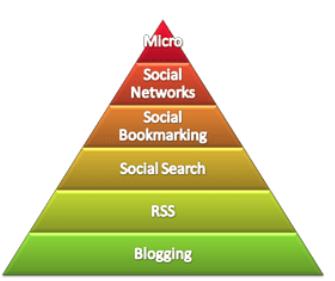 One question I have postulating for some time has just resurfaced by prominent blogger John Jantsch over at ducttapemarketing.com. He says there is. And I agree. The basic theory is similar to Maslow’s theory that self-actualization cannot be achieved until the most basic human psychological needs such as breathing, eating, and sleeping are first met.
One question I have postulating for some time has just resurfaced by prominent blogger John Jantsch over at ducttapemarketing.com. He says there is. And I agree. The basic theory is similar to Maslow’s theory that self-actualization cannot be achieved until the most basic human psychological needs such as breathing, eating, and sleeping are first met.
The same holds true in the small business realm. The ultimate potential of your marketing cannot be actualized until the basic or preliminary marketing requirements are filled.
For example, as I have mentioned man times before, the number one mistake I see business owners make is they implement tactics before strategy. They will go out and buy radio advertising before they have thoroughly researched their target market, determined their competitive advantage or their marketing message.
In regards to social marketing there is a logical progression that should be followed. You should learn to walk before you run. John has listed a really hierarchy for this progression.
 He recommends small business owners look at the following progression or hierarchy as they move deeper into social marketing tactics. So, jump in, but do it in this order and don’t move on until you have the basics of each stage down and working for you.
He recommends small business owners look at the following progression or hierarchy as they move deeper into social marketing tactics. So, jump in, but do it in this order and don’t move on until you have the basics of each stage down and working for you.
1) Blogging – the foundation of the pyramid – read blogs, comment on blogs, and then
blog. This is the doorway to all other social marketing.
2) RSS – Aggregate and filter content around subjects, and use RSS technology as a tool to help you repurpose, republish, and create content.
3) Social Search – Often ignored in this discussion but I think it’s become very important for small business owners. By participating, you can stimulate and manage your reputation here.
4) Social Bookmarking – Tagging content and participating in social bookmarking
communities can be a great way to open up more channels to your business. It can also
generate extra search traffic, but it takes work.
5) Social Networks – Branching out to take advantage of the potential prospects you
might find on sites like Facebook or MySpace will frustrate—at least as a business tool—
if you don’t have many of the above needs met. These networks take time to understand
and thrive on ideas and content. You’ve got to have much to share if you wish to build
a business case.
6) Micro – He lumped some of the more experimental social tools into the edgy trend of
micro: social, real-time communication that will likely only confuse most small business
owners. The confusion is not because they can’t figure out how to make them work, it’s just not obvious why they should spend the time. John believes Maslow suggested that self- actualization is a place most might never reach. In social marketing terms, Twitter,
Plurk, and FriendFeed might be some sort of sick transcendence.
Pingback: Five in the Morning 112008 « StickyFigure
I think you’re right, and it seems this influence has a direct correlation with its reach and adoption. I’d also argue that within these groups, there exists another hierarchy. Some bloggers, Digg members and Social Networks are much more inflluential than others.
Interesting post you have here on your pyramid to Social Media Business. I think that the Social Networks should be your basis foundation because blogging is a little bit more complicated, best way to learn about social media is diving into a Facebook account and chatting up with old classmates and co-workers. Overall good points.
@ Jonathan: Yes there are social sites that are more popular that others. But when you say more influential, lets remember that we are talking marketing here. Though certain platforms have more of a broad reach some smaller more niched may have more influence for YOUR target audience. I personally don’t use Digg much because I find that it is often not that relevant.
@Justin:I agree that for familiarity points facebook is a great stepping stone though it is not the best medium to build readership and other than installation, I feel a blog is easier to use. What do you think?